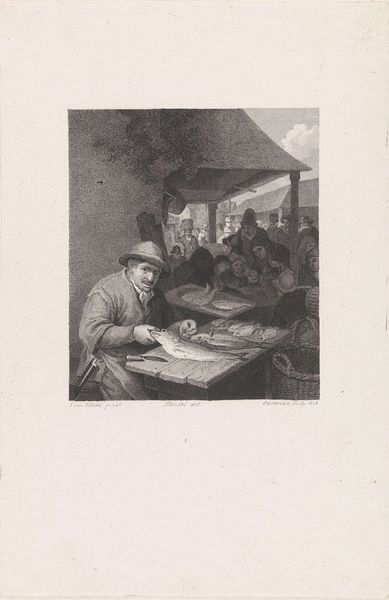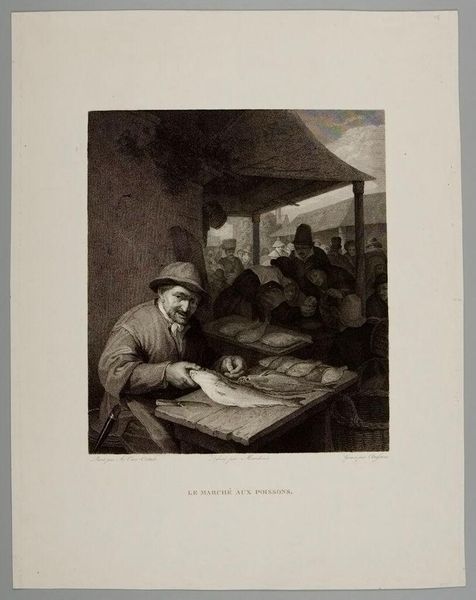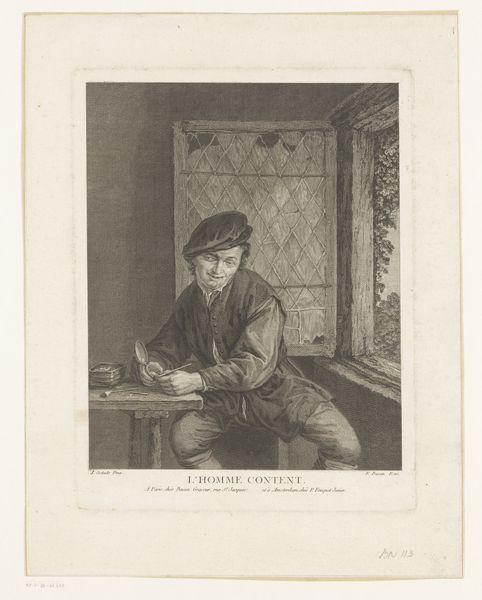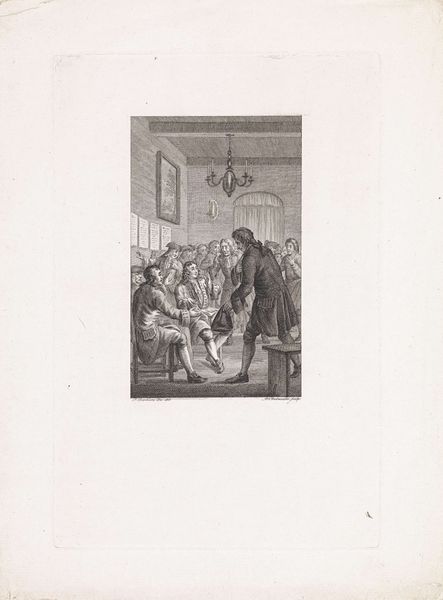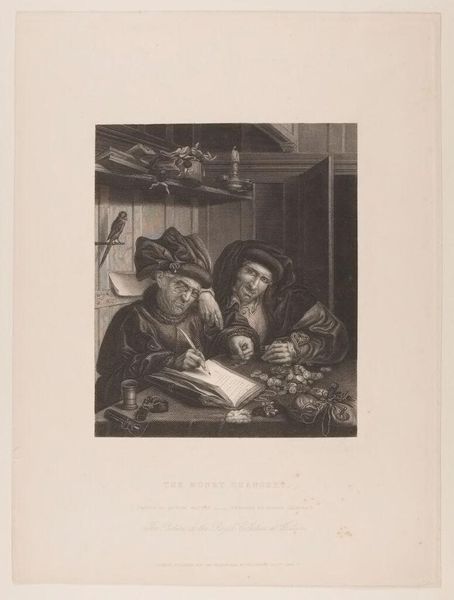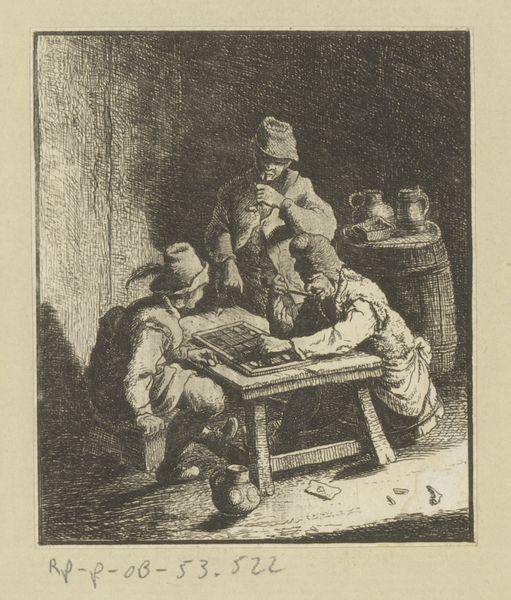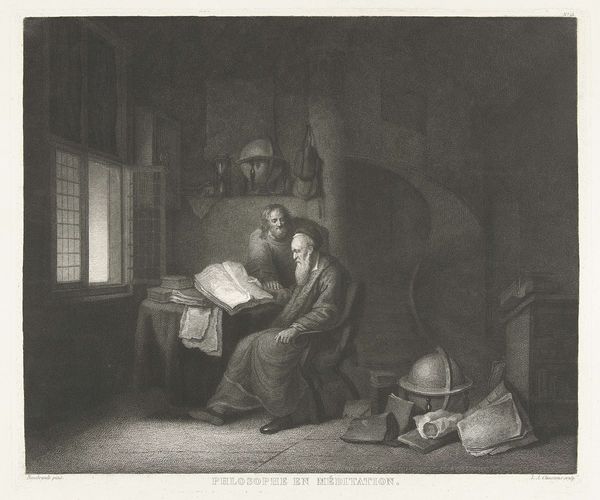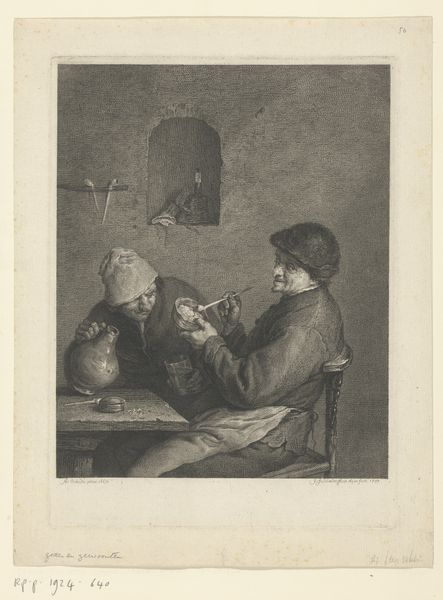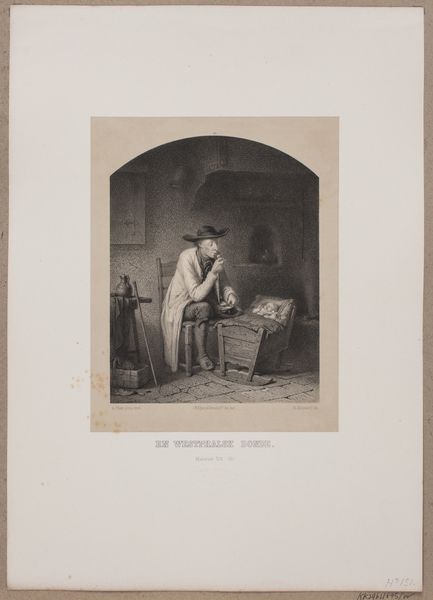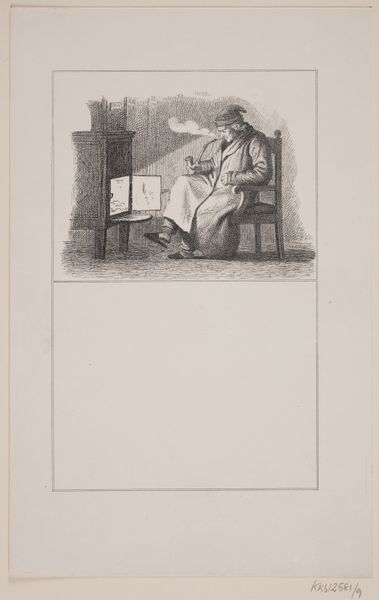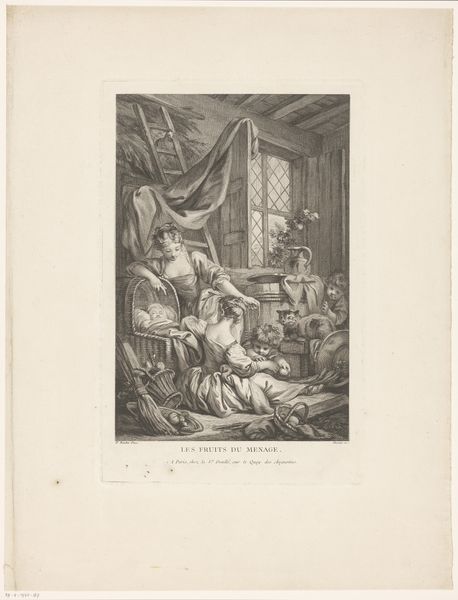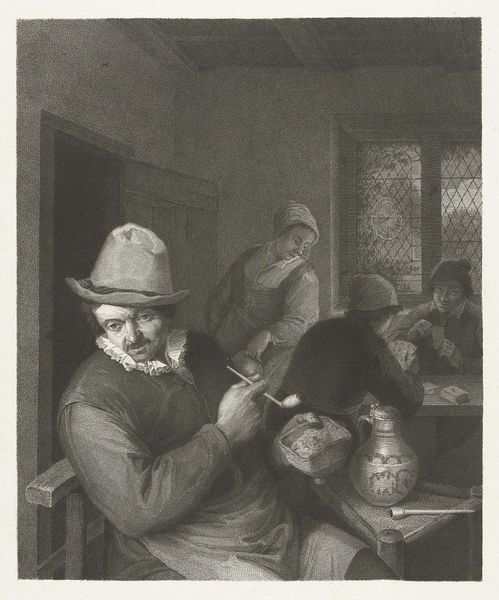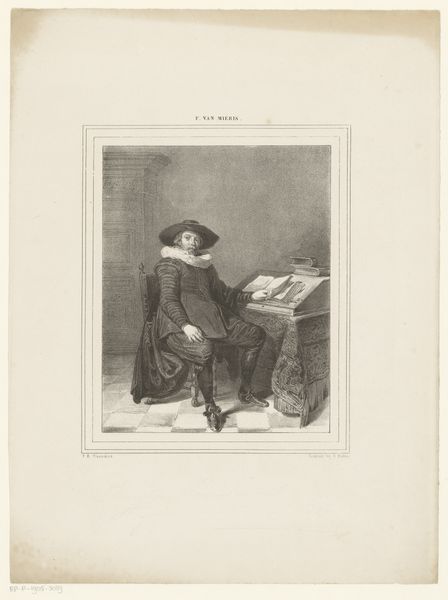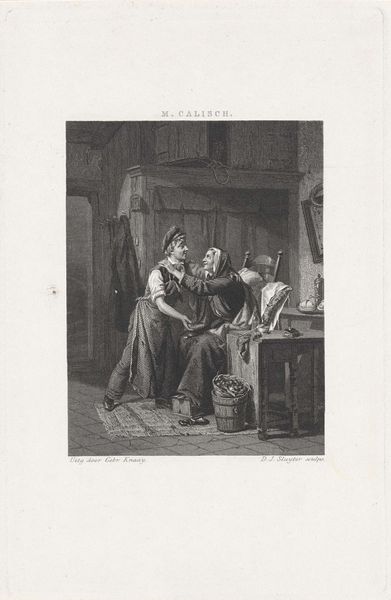
Dimensions: height 390 mm, width 323 mm
Copyright: Rijks Museum: Open Domain
Curator: This is "Visboer op de markt," or "Fishmonger at the Market," an engraving made sometime between 1792 and 1834, after a work by Isack van Ostade, by Lambertus Antonius Claessens. It plunges us into the bustle of daily life. Editor: Immediately, I notice the contrast – the shadowed stall and focused fishmonger against a teeming, almost chaotic market crowd fading into the background. It’s quite dramatic. Curator: And note the technique; look at the fine lines that define the texture of the fish scales, the rough wood of the table, and the details of the clothing. Claessens wasn’t just reproducing an image; he was highlighting the labor and craftsmanship involved. Editor: Right. These kinds of market scenes became very popular through prints, because of the public interest in history paintings or genre paintings like this one. You have the working class going about daily activities while doing business in an informal public place. Curator: It highlights how something as fundamental as access to food was mediated through systems of labor and exchange. Notice the gaze of the fishmonger – it pulls you into this commerce, doesn’t it? The engraver's labor allowed access for others to experience Van Ostade’s market scene. Editor: Yes, I'm also curious about where images like these circulated at the time. I suppose in public places, print shops, and middle class domestic spheres, bringing broader visibility to the lives of everyday Dutch people? It speaks to a burgeoning sense of national identity and perhaps romanticism. Curator: Indeed. This isn’t just an image of a fishmonger; it's a social record of material conditions and a glimpse into 18th or 19th-century craftsmanship. Editor: Considering this print's distribution, it provided not just a market scene to engage with, but also promoted the social and economic ideals through its presentation of the subjects, and allowed for future distribution and art accessibility. A complicated situation! Curator: Absolutely, a snapshot into not just Dutch material culture, but the labor of distributing the visual itself. Editor: Food for thought.
Comments
No comments
Be the first to comment and join the conversation on the ultimate creative platform.
